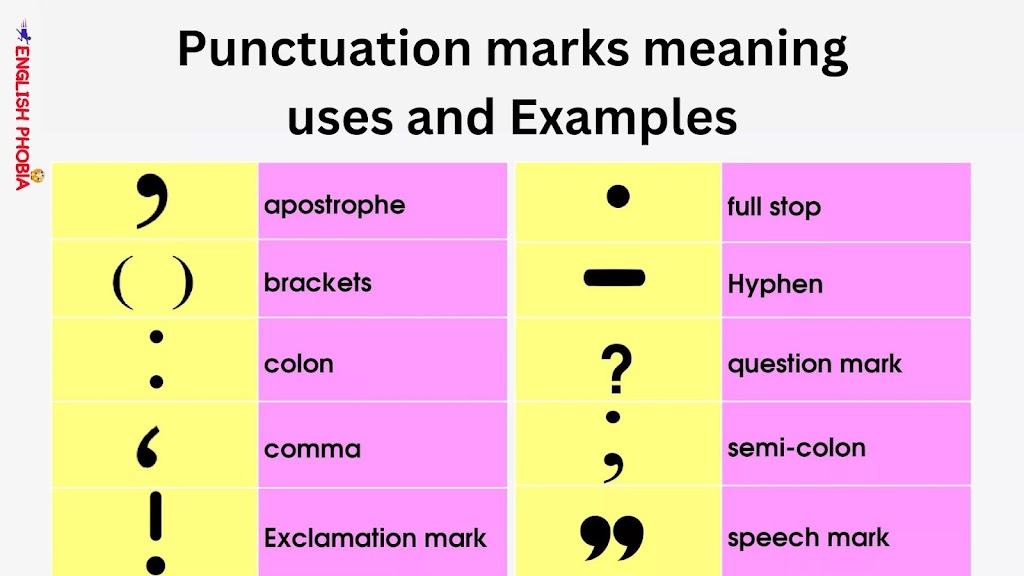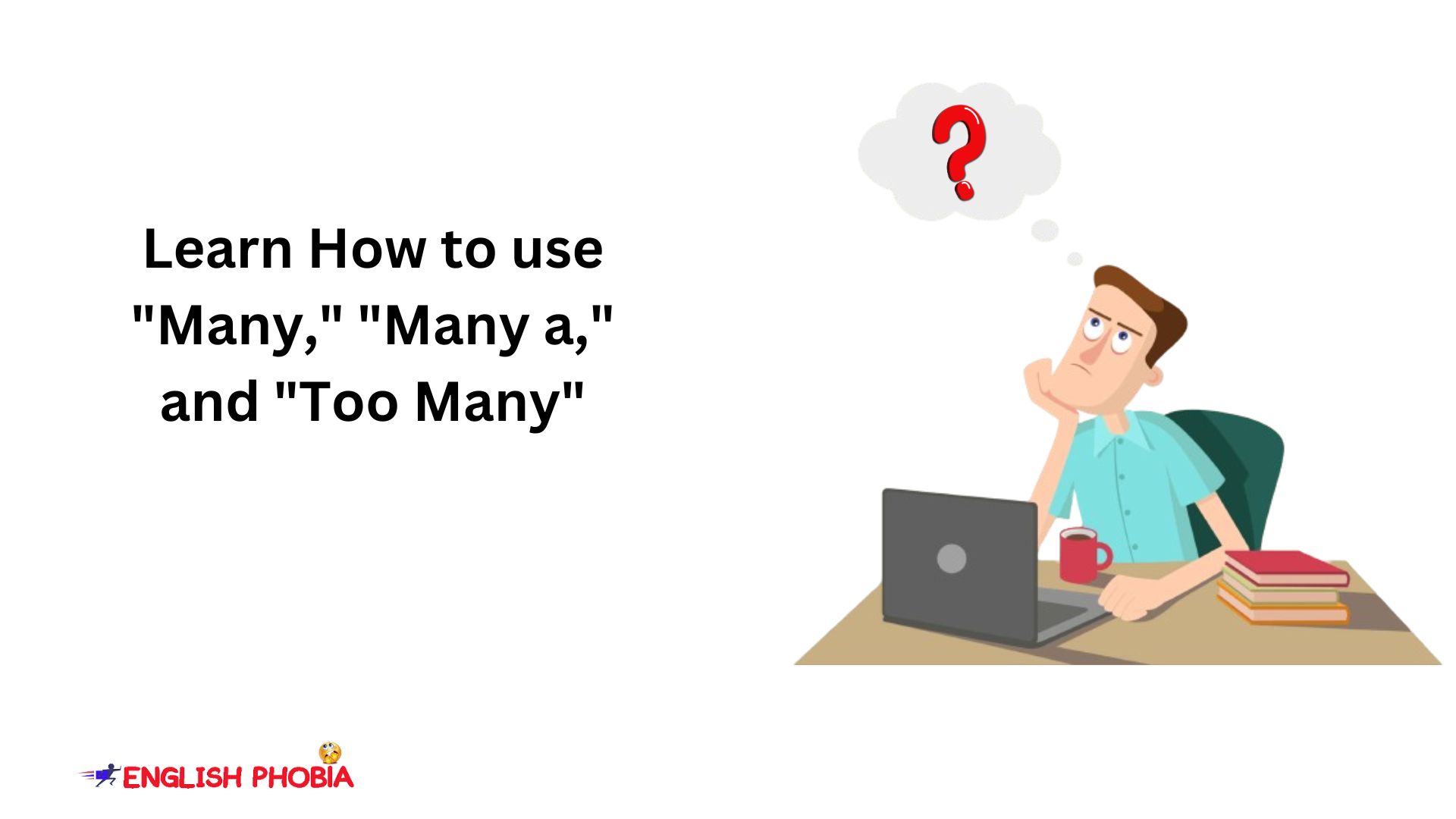Have you ever read a sentence that confused you because it was missing punctuation marks? Punctuation marks are essential elements of basic sentence patterns. These help to convey meaning and organize sentences. They play an important role in making our writing clear, concise, and easy to understand.
In this blog post, we will discuss the meaning, uses, and examples of various types of punctuation marks including; periods, question marks, exclamation marks, commas, colons, semicolons, dashes, hyphens, brackets, braces, parentheses, apostrophes, quotation marks, and ellipses.
What is a Punctuation Mark?
Punctuation marks are symbols that we use in writing to clarify meaning. These indicate the pauses and intonation that would be present in speech. There are several types of punctuation marks in the English language, including:
Period (.)
Question Mark (?)
Exclamation Mark (!)
Comma (,)
Colon (:)
Semicolon (;)
Dash En dash(–) & Em dash(—)
Hyphen (-)
Brackets [ ]
Braces ({})
Parentheses ( )
Apostrophe (‘)
Quotation Mark (” “)
Ellipsis (…)
These are all punctuation marks that we use in English.
Period (.)
The period, also known as a full stop, is used to indicate the end of a sentence. It is the most common punctuation mark. It is used in almost every written language. In addition to marking the end of a sentence, periods can also be used in abbreviations and acronyms.
Question Mark (?)
We use a question mark to show both direct and indirect questions. It is placed at the end of a sentence to show that the writer is asking a question. Question marks should not be used in statements.
For example;
How are you feeling today?
What time is it?
Exclamation Mark (!)
An exclamation mark is used to express strong emotions, such as excitement, surprise, or shock. We use this punctuation in English grammar to emphasize a point, command, or warning.
Exclamation marks should be used sparingly, as overusing these can make writing appear overly emotional or unprofessional.
For example;
Watch out for the car!
Comma (,)
Commas meaning are used to separate items in a list, a group of phrases, and separate independent clauses joined by coordinating conjunctions, and nonessential information. They can also be used to indicate a pause in speech or to separate elements within a sentence for clarity.
For example;
Roma loves reading books, cooking food, and learning English.
Colon (:)
A colon is used to introduce a list, explanation, or elaboration. It often follows an independent clause and is used to direct the reader’s attention. Colons can also be used in formal business letters, time expressions, and ratios.
For example;
The conference has three main themes: sustainability, innovation, and collaboration.
Semicolon (;)
We use a semicolon to separate two independent clauses or items in a list that contains commas. Semicolons can help improve the clarity and flow of a sentence by showing the relationship between two separate ideas.
Dash – En dash(–) & Em dash(—)
An En dash is used to indicate a range of numbers, dates, or times. It is always a little longer than a hyphen, but shorter than an Em dash. An em dash is used to create emphasis, indicate an interruption, or set off nonessential information in a sentence.
For example;
(En dash): The workshop will be held from August 1–5.
(Em dash): I couldn’t believe it—she had won the lottery!
Hyphen (-)
A hyphen is used to join words or parts of words together, such as in compound words, compound adjectives, or prefixes. It helps to clarify meaning and make the text more readable.
For example:
She has a part-time job.
The well-known author signed my book.
Brackets [ ]
Brackets, also known as square brackets, are used to enclose words or phrases that have been added to a sentence by someone other than the original author. They can also be used to indicate a mistake, omission, or clarification in a quote.
For example;
She said, “I just [recently] started working at the new office.”
Braces ({})
Braces, also known as curly brackets, are typically used in mathematics and computer programming. In writing, they are rarely used but can be employed to enclose a set of items or to indicate that a set of items are related. For example;
The set of natural numbers is {1, 2, 3, 4, …}.
Parentheses ( )
Parentheses are used to set off nonessential information, clarify a point, or add supplementary details within a sentence. We also use them to close letters or numbers in lists.
He gave me a book (a mystery novel) for my birthday.
The new employee (Jane) started today.
Apostrophe (‘)
We use an apostrophe to show possession, ownership, or the omission of letters in contractions. It is important to place the apostrophe correctly to show the intended meaning and avoid confusion.
For example,
Aryan’s father is a bodybuilder.
It’s my friend’s birthday. I can’t believe it’s 2022 already!
Quotation Mark (” “)
Quotation marks are used to enclose direct speech, quotations, or titles of short works, such as articles, songs, or poems. They help to indicate that the enclosed text is a direct quote, making it more clear and accurate.
Ellipsis (. . .)
The ellipsis is used to indicate an omission of words, especially in quotations, or to suggest a pause or trailing off in thought. It helps to make the text more concise and focused, while still conveying the intended meaning. For example:
The story continues …
Conclusion
Punctuation marks play a crucial role in language learning programs, helping to clarify meaning, organize information, and guide readers through the text. By understanding punctuation marks and their uses, we can improve our writing skills and create more effective, engaging, and accurate communication.











